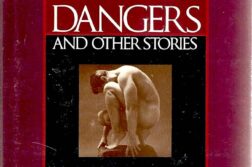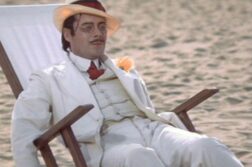WAS THERE a real-life model for Dorian Gray? Opinion among Wilde scholars is divided, but Jerusha Hull McCormack, who has written a book titled The Man Who Was Dorian Gray (2006), is quite sure there was. His name was John Gray, a minor British poet about whom she has written a number of works. And she backs up her theory with some convincing quotations from Wilde and his contemporaries, as well as from newspaper reports.
John Gray was born in 1866 as a poor lad, the oldest of eight. Ambitious and intelligent, he worked hard, fell in with the right crowd, worked his way up the Civil Service ladder to become a librarian in the Foreign Office, published some poetry, and made it into Wilde’s inner circle before being overthrown by Lord Alfred Douglas. His first published work, a translation of a Verlaine poem, appeared in 1890 in a “uranian” periodical called The Artist and Journal of Home Culture. He was a friend of Charles Ricketts and Charles Shannon, who published his fiction in their literary magazine, The Dial.
Gray’s writing abilities—and his handsome looks—impressed Oscar Wilde, who underwrote the cost of publishing Gray’s first collection of poems, Silverpoints. In a 1994 reprint by Woodstock Books, Ian Small and R. K. R. Thornton describe the book as an “icon of the 1890s.” Thirteen of its 29 poems were translated from the French, and several are dedicated to movers and shakers of the fin-de-siècle era. Its epigraph was a line from Verlaine.
In a dramatic second act, John Gray reinvented himself as a priest. For a number of years he had maintained an apparently Platonic relationship with André Raffalovich, once a friend of Wilde, a poet and neglected son of a wealthy Russian-Jewish family, who was often mistreated in anti-Semitic England. Raffalovich quietly subsidized Gray, some of Gray’s siblings, and a number of other impecunious writers and artists, notably Aubrey Beardsley. In 1896, Raffalovich suddenly decided to convert to Catholicism (perhaps emulating the example of the beloved Scottish governess who’d taken care of him since childhood), became a lay member of the Dominican Order, and took the name Brother Sebastian. Gray followed suit, but went further and became a Roman Catholic priest, assigned to an Irish slum in Edinburgh. (McCormack asks, perhaps rhetorically: “Was there some infection at Oxford, a diseased longing for ritual and candles and beautiful young priests?”)
Raffalovich would soon erect a church for Gray in a smart neighborhood. They lived together in a nearby house, their friendship supervised by Raffalovich’s now elderly governess, who treated both men as her own children. Gray had long since repudiated Silverpoints and reportedly tried to buy up and destroy any remaining copies that he could find. Gray and Raffalovich died within a few months of each other, in 1934.
This piece by literary editor Martha E. Stone first appeared in the May-June 2001 issue.





